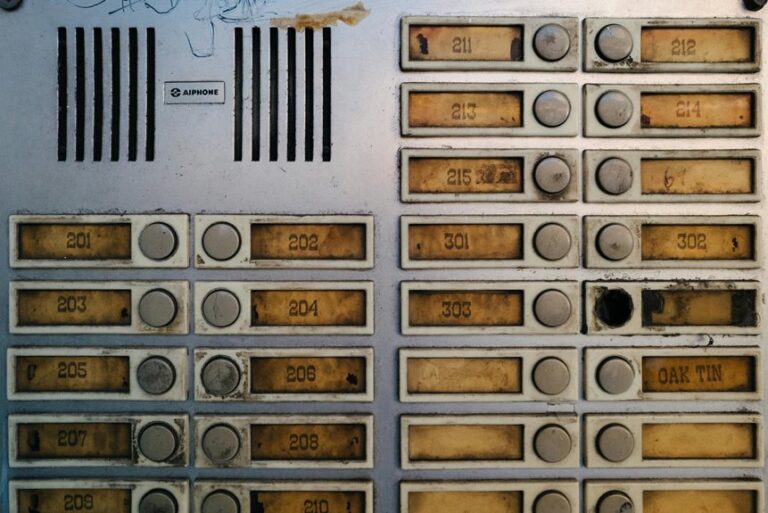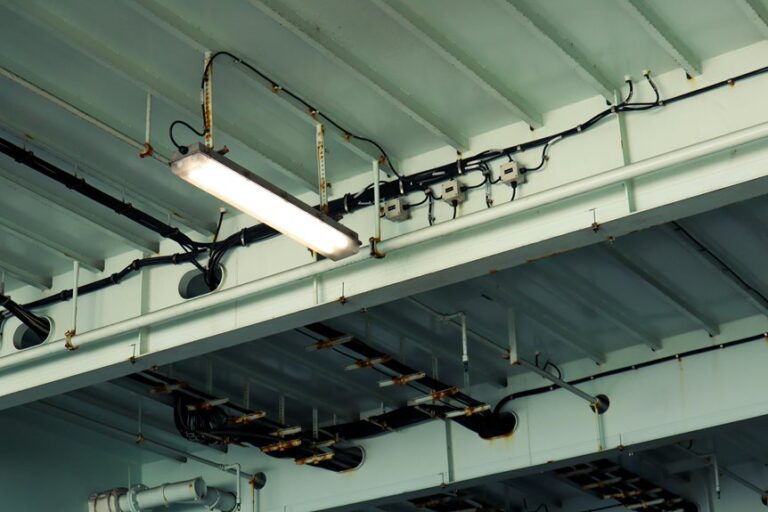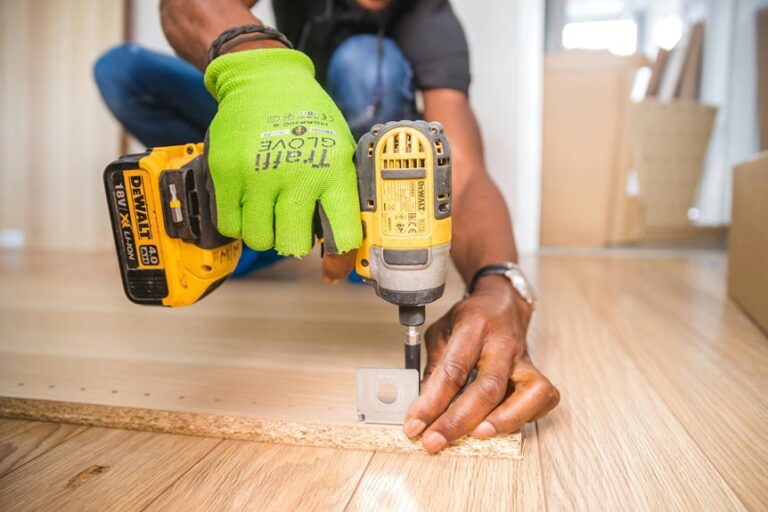You know how critical it is to maintain the efficiency and reliability of your electrical systems. By conducting regular performance checks, you can identify potential issues before they escalate, reducing both downtime and repair costs. These assessments not only extend the lifespan of your components but also guarantee compliance with industry standards. However, the process of evaluating system performance involves various tools and techniques that can be both intricate and essential. So, what specific steps should you take to guarantee your system operates at peak efficiency?
Importance of Performance Checks
Performance checks are essential for guaranteeing the reliability and efficiency of electrical systems. When you conduct regular performance evaluations, you identify potential issues before they escalate into serious problems. This proactive approach minimizes downtime and reduces repair costs, ultimately saving you money.
By monitoring key parameters such as voltage, current, and frequency, you can ascertain that your systems operate within specified limits. Deviations from these parameters can signal inefficiencies or potential failures. Regular checks also facilitate compliance with industry standards and regulations, helping you avoid penalties and maintain a safe working environment.
Moreover, performance checks enhance the lifespan of your electrical components. By identifying wear and tear early, you can schedule maintenance or replacements, preventing catastrophic failures. This not only protects your investment but also guarantees the safety of personnel working with or around the systems.
Incorporating performance checks into your routine maintenance schedule fosters a culture of safety and accountability. It reinforces the importance of electrical system integrity and promotes peak performance. Additionally, finding qualified electricians ensures that performance checks are conducted accurately and efficiently.
Common Electrical Issues
Identifying common electrical issues is vital for maintaining system reliability and efficiency. One frequent issue you might encounter is overloaded circuits. When circuits draw more current than they're designed to handle, it can lead to overheating and potential failures. You should regularly check circuit loads to prevent this.
Another common problem is poor connections. Loose or corroded connections can cause voltage drops, leading to erratic performance or even equipment damage. Inspecting all connections for tightness and signs of corrosion can help you address this issue.
Additionally, you might face issues with circuit breakers tripping frequently. This could indicate a fault in the wiring or a malfunctioning device on the circuit. Investigating the cause is essential to avoid repeated interruptions.
Grounding issues also pose a significant risk. Inadequate grounding can lead to electrical shock hazards or equipment damage. Verify all systems are properly grounded according to relevant codes.
Lastly, look out for signs of wear and tear in wiring insulation. Frayed or damaged insulation can expose wires, increasing the risk of shorts or fires. Regular inspections can help you catch these problems early and maintain a safe electrical system. Furthermore, consulting with expert electricians in Rancho Cucamonga can provide valuable insights into proper maintenance and safety measures for your electrical systems.
Tools for Performance Testing
To effectively test electrical system performance, you need the right tools.
Multimeters and oscilloscopes are essential for measuring voltage, current, and waveforms, while circuit analyzers and load tests help assess overall system integrity.
Understanding how to use these tools will enhance your ability to pinpoint issues and optimize performance.
Multimeters and Oscilloscopes
When it comes to testing electrical systems, multimeters and oscilloscopes are crucial tools that provide essential insights into performance and functionality. A multimeter allows you to measure voltage, current, and resistance, enabling quick diagnostics of electrical components.
Whether you're checking a circuit's continuity or measuring the voltage drop across a component, a multimeter delivers accurate readings that help identify issues.
On the other hand, oscilloscopes are indispensable for analyzing waveforms and signal behavior. They visualize electrical signals over time, allowing you to observe the shape, frequency, and amplitude of the signals in your system.
This is particularly useful for troubleshooting complex issues, such as noise interference or signal distortion.
To effectively use these tools, start by familiarizing yourself with their functions and settings. Confirm proper lead connections and calibrate the devices as needed.
With a multimeter, measure static values, while with an oscilloscope, focus on dynamic signal characteristics. By mastering these tools, you can greatly enhance your ability to diagnose and resolve electrical system problems, confirming peak performance and reliability.
Circuit Analyzers and Load Tests
While multimeters and oscilloscopes provide foundational insights, circuit analyzers and load tests take performance evaluation a step further. These advanced tools help you assess the overall health and efficiency of electrical systems. Circuit analyzers can measure voltage, current, resistance, and power factor, enabling you to pinpoint irregularities that may indicate potential issues.
When performing load tests, you're simulating operational conditions to observe how the circuit behaves under stress. This process involves applying a known load and monitoring the system's response. You'll want to check for voltage drops, overheating, or unexpected fluctuations. These tests help you ascertain that the circuit can handle its intended load without failure.
Using both circuit analyzers and load tests together allows for a thorough assessment. You can identify weak points in the system and verify that components, such as breakers and transformers, function correctly.
Step-by-Step Inspection Process
To guarantee peak performance of your electrical system, you'll want to follow a structured inspection process.
Start with a visual component assessment to identify any obvious issues, then proceed to voltage testing procedures to check for proper electrical flow.
Finally, conduct circuit continuity verification to confirm the integrity of the connections.
Visual Component Assessment
A thorough visual component assessment is crucial for guaranteeing the reliability of electrical systems. Begin by examining the overall condition of the system's components. Look for signs of wear, corrosion, or physical damage. Pay special attention to connections, as loose or corroded terminals can lead to poor performance.
Next, check the insulation on wires. Cracks, fraying, or discoloration can indicate deterioration, risking short circuits. Inspect circuit breakers and fuses for any signs of overheating or tripping, which may suggest underlying issues.
As you assess enclosures, confirm they're properly sealed and free from moisture ingress. Moisture can cause significant damage, potentially leading to system failure. Verify that all labels and markings are legible, as they provide critical information for troubleshooting.
Don't forget to evaluate grounding connections. A secure and effective ground is crucial for safety and system performance.
Finally, take note of any unusual smells or sounds, as these can be indicators of problems. Document your findings to track changes over time, helping you identify trends or recurring issues.
This extensive visual assessment lays the groundwork for more in-depth evaluations and maintenance tasks down the line.
Voltage Testing Procedures
Voltage testing is an essential step in guaranteeing the integrity and performance of electrical systems. To begin, gather your tools: a digital multimeter or voltmeter, safety goggles, and insulated gloves. Make certain you're working in a safe environment, free from moisture and other hazards.
First, turn off the power to the circuit you're testing. This precaution helps prevent electrical shock during setup. Next, connect the multimeter leads to the appropriate terminals. For AC voltage, set the multimeter to the AC voltage range. For DC voltage, switch to the DC setting.
Now, turn the power back on and observe the readings on the multimeter. Compare these values to the expected voltage levels specified in your system's documentation. If the readings are considerably lower or higher than expected, note this discrepancy for further investigation.
After completing your tests, turn the power off again before disconnecting your equipment. Record all findings and guarantee the work area is clear.
Proper voltage testing helps identify potential issues early, guaranteeing reliable operation and safety in electrical systems.
Circuit Continuity Verification
Verify circuit continuity to confirm electrical paths are intact and functioning correctly. This process is essential for affirming that current can flow without interruption. Follow these steps for effective verification:
- Gather Tools: You'll need a multimeter set to the continuity setting, probes, and safety gear.
- Power Down: Always disconnect power to prevent accidents.
- Test Probes: Connect the probes to the multimeter and verify it beeps or shows a reading when touching them together.
- Check Points: Place one probe at the circuit's start and the other at the end point.
| Step | Action |
|---|---|
| 1. Gather Tools | Multimeter, probes, safety gear |
| 2. Power Down | Disconnect the circuit |
| 3. Test Probes | Verify multimeter works |
| 4. Check Points | Measure from start to end |
If the multimeter indicates continuity, the circuit is intact. If not, inspect for breaks or faulty connections. Following these steps affirms your electrical systems run efficiently and safely.
Frequency of Performance Checks
Regular performance checks are vital for maintaining the efficiency and safety of electrical systems. To guarantee ideal operation, you should conduct these checks at regular intervals. For most residential systems, it's advisable to perform checks at least once a year.
However, if your system experiences heavy usage, or if it's subjected to harsh environmental conditions, you might need to increase the frequency to every six months.
In commercial or industrial settings, where electrical loads can fluctuate considerably, quarterly checks are often necessary. Regular inspections help identify potential issues before they escalate, reducing the risk of failure and downtime.
You should also consider any changes in your electrical load or system configuration. If you've added new equipment or made modifications, it's prudent to reassess the system's performance soon after.
Likewise, after severe weather events or other disruptions, conducting a performance check is essential to ascertain everything remains in good working order. Additionally, hiring reliable electricians ensures that your performance checks are thorough and effective.
Professional vs. DIY Checks
When it comes to performance checks, you have the option to choose between professional services and do-it-yourself (DIY) approaches. Each has its pros and cons, which you should consider before making a decision.
Hiring a professional guarantees expertise and detail. Certified technicians have the training, experience, and tools necessary to identify issues that might elude an untrained eye. They can perform tests like insulation resistance, continuity checks, and load analysis, providing you with a thorough report on your system's health. This can be especially valuable for complex systems, where even minor issues can lead to significant failures. Additionally, having your work performed by expert electricians ensures that all local codes and safety standards are met.
On the other hand, DIY checks can save you money and give you a hands-on understanding of your electrical system. Basic tasks like checking circuit breakers, inspecting wiring for damage, or testing outlets can often be done safely. However, a lack of knowledge can lead to oversight of critical problems or even safety hazards.
Ultimately, the choice depends on your comfort level, knowledge, and the complexity of your electrical system. Evaluating both options carefully will help you maintain the reliability and safety of your electrical system.
Maintaining System Efficiency
To guarantee ideal performance of your electrical system, consistent maintenance is vital. Regular inspections help identify issues before they escalate, making certain your system operates efficiently.
Start by checking connections and tightening any loose wires. Loose connections can lead to overheating and energy loss, affecting overall efficiency.
Next, clean components like circuit boards and terminals to prevent dust buildup. Dust can cause overheating and hinder performance.
Also, verify that your circuit breakers and fuses are functioning properly; replace any that show signs of wear or malfunction.
It's essential to monitor your system's load. Overloading can lead to inefficiencies and potential damage. Consider redistributing power loads across circuits to maintain balance and efficiency.
Additionally, evaluate your energy usage regularly. By analyzing your consumption patterns, you can identify areas where you can reduce waste. Installing energy-efficient devices can also contribute considerably to overall system efficiency.
Finally, keep a maintenance log. Documenting your inspections and repairs not only helps track performance trends but can also assist in troubleshooting future issues.
Seeking professional help from top electricians in San Bernardino can further enhance your system's reliability and performance.
Following these steps will help maintain your electrical system's efficiency, ensuring reliability and longevity.
Conclusion
Just as a farmer tends to his crops to guarantee a bountiful harvest, you must nurture your electrical system through regular performance checks. By identifying issues before they sprout into costly problems, you cultivate reliability and efficiency. This proactive approach not only safeguards your investment but also extends the life of your components, allowing your system to flourish. So, embrace these checks; they're the water that keeps your electrical garden thriving.








